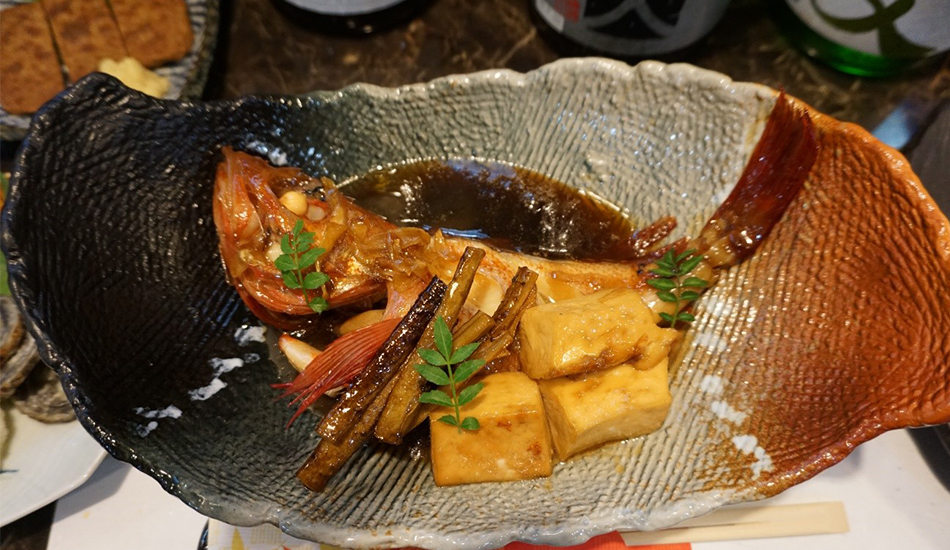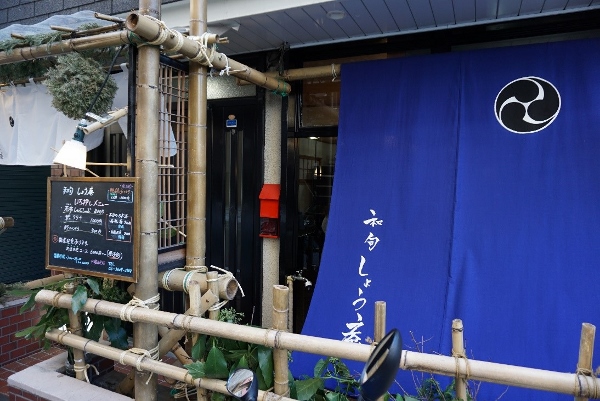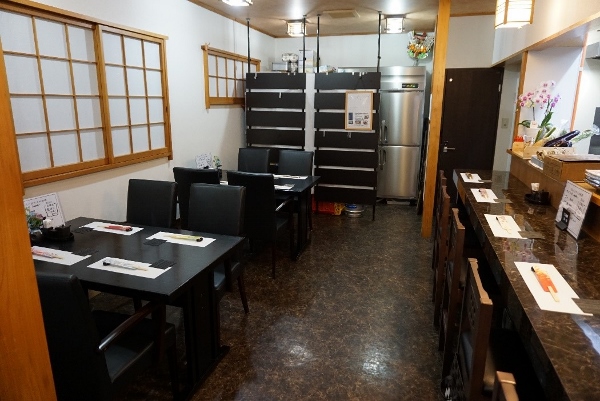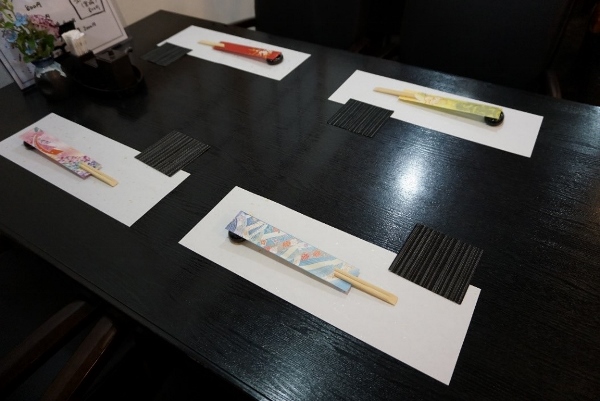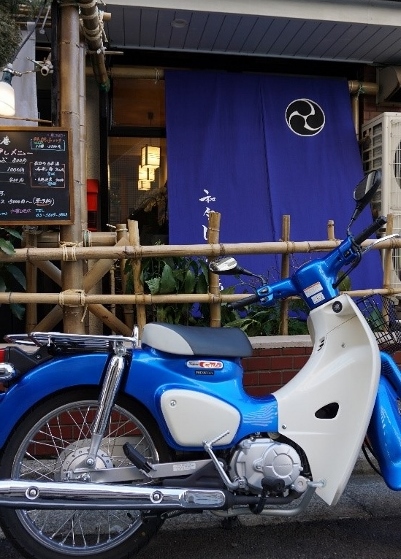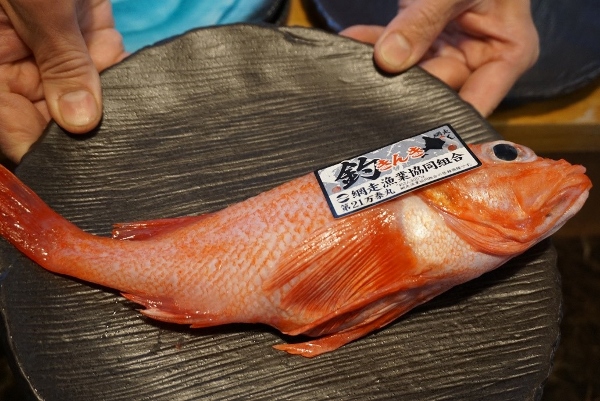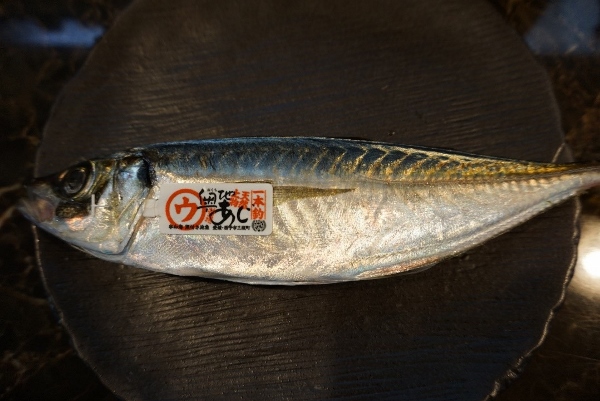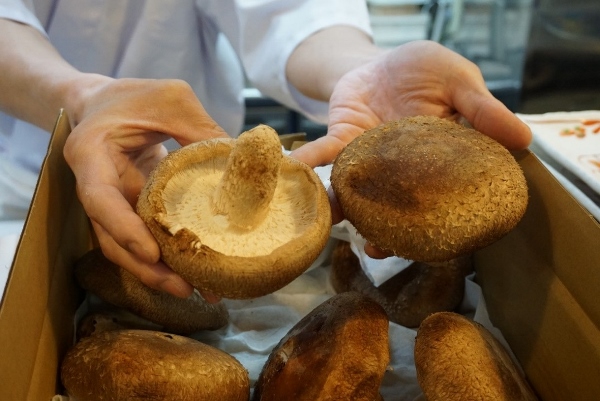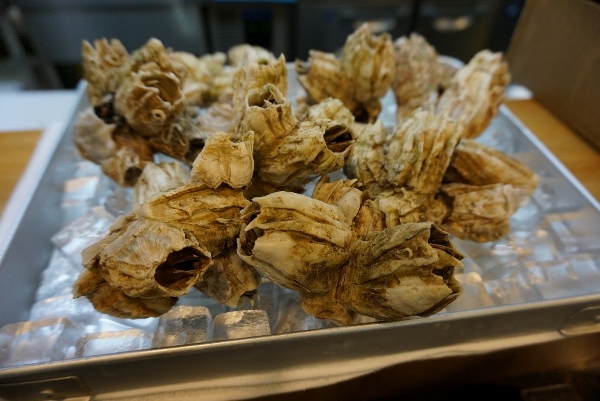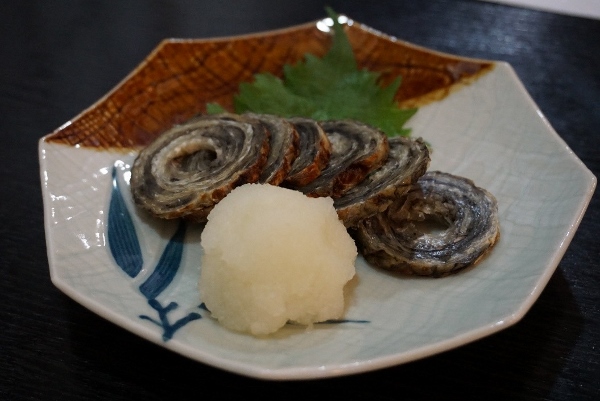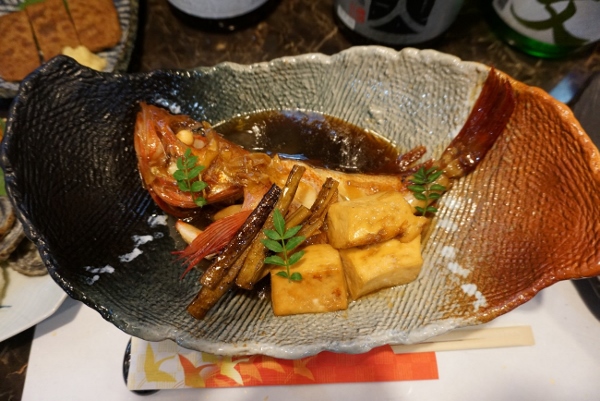A Taste of Ehime in Kameido
Published: March 25, 2019
Ehime Prefecture lies on the western part of Shikoku, Japan’s fourth largest island, a long way from Tokyo’s Koto ward. So, it was with interest that I went to Kameido to visit Washun Shouan, a restaurant boasting a menu containing Ehime dishes, to learn the connection between the two.
Opened in October 2018, Washun Shouan announces itself with an eye-catching blue cloth hung in front of the restaurant.
Inside the décor has that attractive, neat, organised layout which is so much a feature of the Japanese restaurant.The rectangular room is accented by the sharp contrast between the dark furniture and white walls, and with sliding window screens.
Thought has gone into the table and counter settings, and my wife was particularly taken with the splash of colour provided by the paper chopstick holders, which customers are welcome to keep; a thoughtful alternative to throwing them away after use.
Washun Shouan is a “ko-ryouri-ya”, a small restaurant serving a range of simple Japanese a la carte dishes and offering sake as an accompaniment. As the restaurant’s Japanese name implies the menu changes with the seasons.
It is run by Mr. Hiroaki Shoji, a friendly, self-effacing person, who politely answered our questions whilst he prepared a selection of dishes for us to sample. Mr. Shoji learnt his trade at Uwajima a well-known restaurant in Shimbashi, famous for its Ehime cuisine. When the restaurant closed in 2018, upon the retirement of its owner, Mr. Shoji decided to set up on his own and chose the unlikely location of Kameido, owing to living nearby.
Whilst some ingredients come direct from Yahatahama, a fishing port in Ehime, as Mr. Shoji pointed out it is prohibitively expensive to have everything shipped daily from Shikoku. So, to ensure the freshness of the food placed in front of his customers, every morning Mr. Shoji jumps onto his gleaming blue Honda Super Cub and heads off to the new Tokyo Metropolitan Central Wholesale Market in Toyosu to buy ingredients for the evening’s menu.
Quality obviously matters to Mr. Shoji, who proudly showed us the individual Kinki (Orange Roughy)
and Okuchi Aji (Okuchi horse mackerel), which he had bought that morning.
He then opened a box of mushrooms labelled “kuma-san no mori herushi steak” (which roughly translates as Mr. Bear’s Forest Healthy Steak). These thick solid mushrooms were huge and looked delicious.
Looking down the counter, I spied movement on a tray. These were fresh fujitsubo (barnacles), peering out of their shells.
Whilst we sat and watched, Mr. Shoji worked away quietly behind the counter and proceeded to give us a taste of what his restaurant has to offer. What we got was both a pleasure for the taste buds and a feast for the eyes.
First up was a starter of kawachikuwa, an Ehime speciality of grilled roundels of eso skin, the quaintly-named lizardfish, served with shiso leaf and daikon oroshi (grated Japanese radish).
Then came jakoten, another Ehime dish of fried fish cake with ginger adding a sharp bite to the tongue.
There were side dishes of pickles (nukazuke) and a small dish of “ishidai no kawa no rikyu”, a delicious mix of fish skin, sesame, and shiso in vinegar.
The main dishes followed. Mr. Shoji served us kaizoku-meshi, derived from the famous Ehime dish known as tai-meshi, consisting of slices of sea bream, raw egg, dried seaweed and sesame, all in his specially-prepared soup.
Next came the Kinki (see top photograph) cooked in a delicious sweet mirin sauce and served with gobo, tofu and freshly steamed fluffy rice; Mr. Shoji doesn’t allow rice which is cooked and then kept warm and left to stand.
Nothing is wasted. To finish, a bowl of kojiki-jiru (beggar’s broth) appeared. This is a tasty bouillabaisse-style soup, made from the remnants of the Kinki .
↑
To accompany meals Washun Shouan has a selection of bottles of sake, including several from Ehime. There is also wine and beer available. Average prices for a meal, including drinks, range from 7,000 yen to 10,000 yen, but by sharing dishes this can drop to around 5,000 yen.
For Mr. Shoji, the use of seasonal ingredients is very important in his quest to serve carefully-prepared dishes. As he says, he wants his customers to eat slowly at their own pace and to enjoy their food one dish at a time.
This sounds like a good recipe for sitting down to relax and enjoy food that is just that bit different.
Story and photographs by Jeremy Hutchinson

